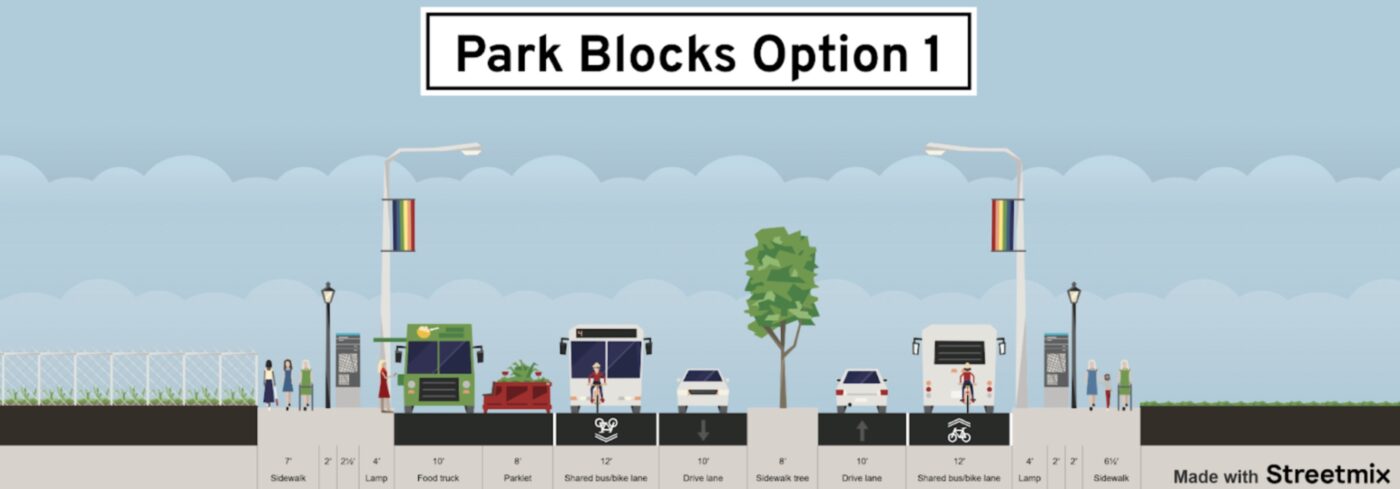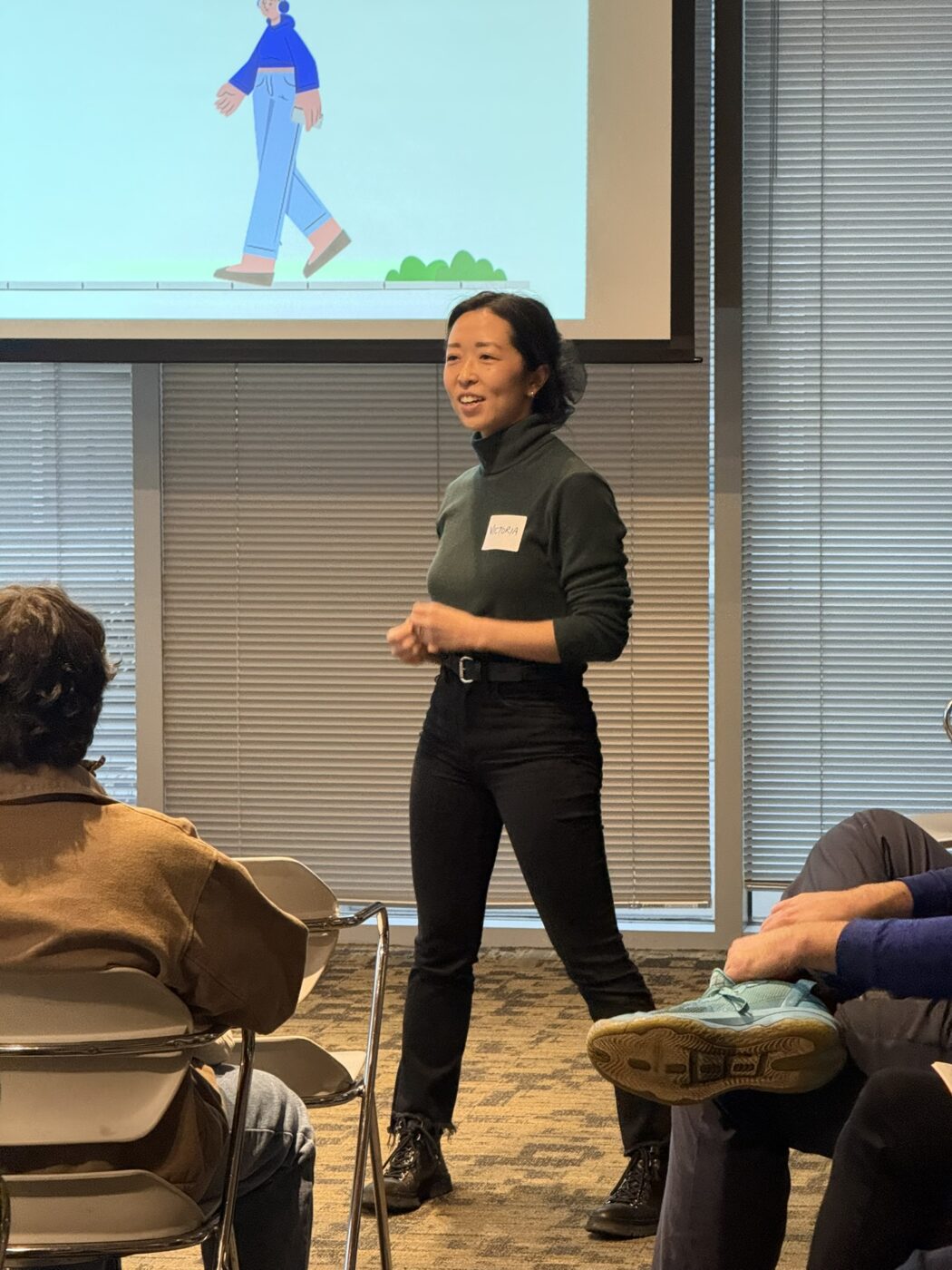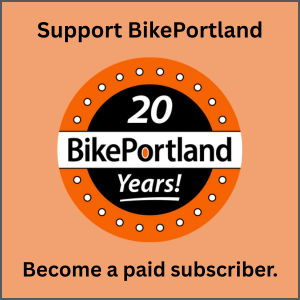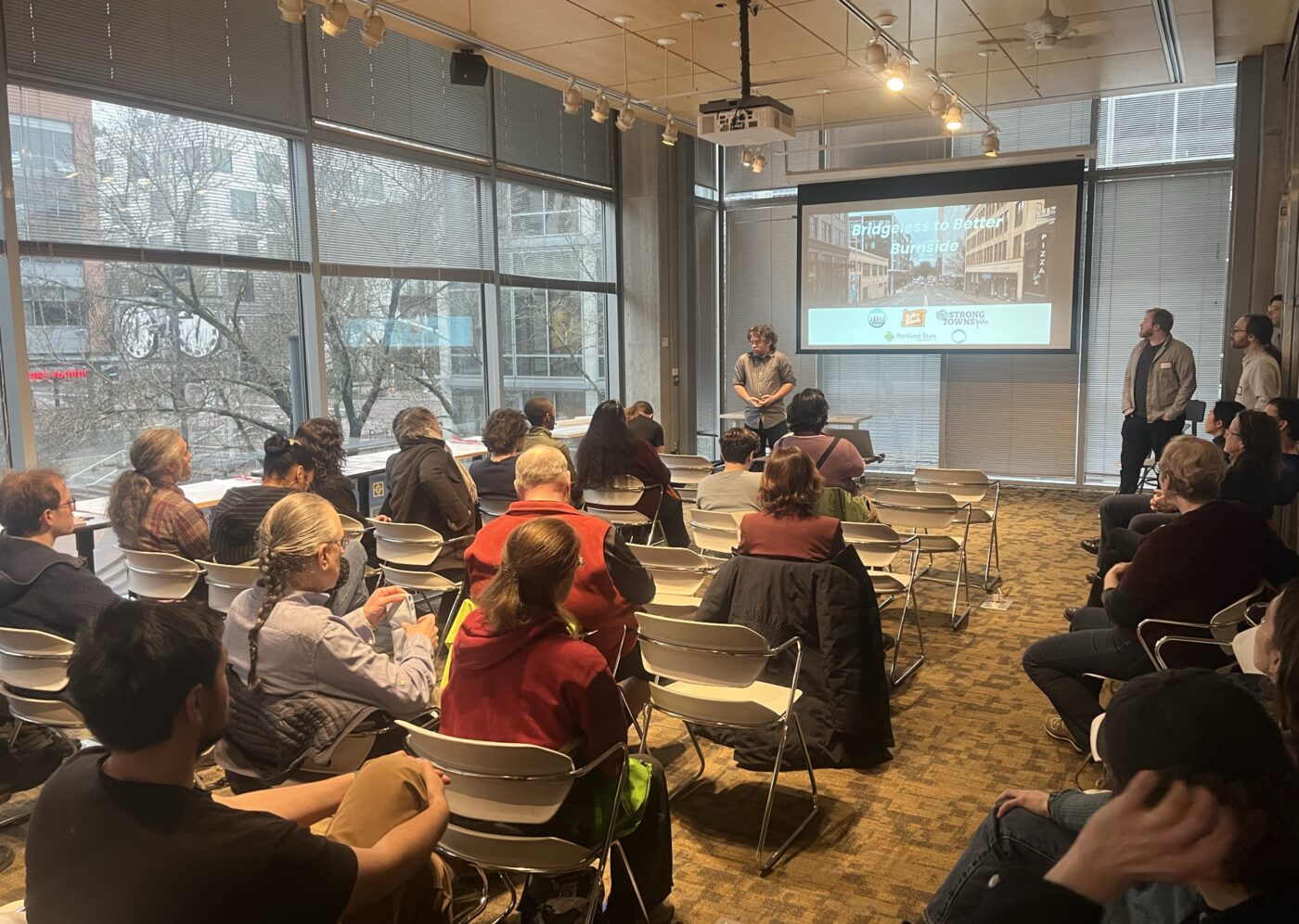
This story was written by Brian Bill, a student in Portland State University’s Masters of Urban Planning program.
Quiet excitement filled a room inside the Portland State University Urban Center Building on March 11th as Ryan Hashagen of Better Block PDX (the folks who brought us the Naito Parkway bike lanes) and Victoria Via of Strong Towns PDX took the stage to kick off the initial design workshop of the Bridgeless to Better Burnside Project. Using the upcoming closure of the Burnside Bridge closure as an opportunity to reimagine West Burnside is an exciting enough proposition that it brought together more than 50 enthusiastic design professionals and urbanists to the event.
They wanted to be part of what may be Better Block’s most ambitious project yet.
With the Burnside Bridge set to close for reconstruction from 2027 to 2032 as part of Multnomah County’s Earthquake Ready Burnside Bridge project, the Better Burnside project aims to transform W Burnside Street from a dangerous barrier into a signature street at the heart of Portland’s west side. The project will collaborate with community groups to propose streetscape improvements that can be implemented while the bridge is closed and W Burnside is no longer a route for through traffic. The future of W Burnside extends beyond the 5-year bridge closure, and proposals will also focus on balancing community desires with the new bridge’s lane configuration, pedestrian paths, and protected bike lanes.
Across two classrooms, participants took to maps and trace paper to sketch out their ideas for a W Burnside designed for people.
Among the proposed designs is a shared bike and bus-only lane in each direction near the Park Blocks that would be buffered by bollards from car traffic and include parklets, food carts, more pedestrian-scale lighting and raised crosswalks (see above). On SW 3rd Ave, students have proposed removing a right turn lane in front of Dante’s and turning it into a public parklet, as well as expanding the median and painting a street mural in the intersection.
A final option, which the students termed “Burnside Sunday Parkways,” would include temporary placemaking installations to enhance Portland Sunday Parkways. In this scenario, local businesses and organizations could partner with the city to provide cultural programming, create educational opportunities, and prepare for increased business activity along with the increase in bike and pedestrian traffic.
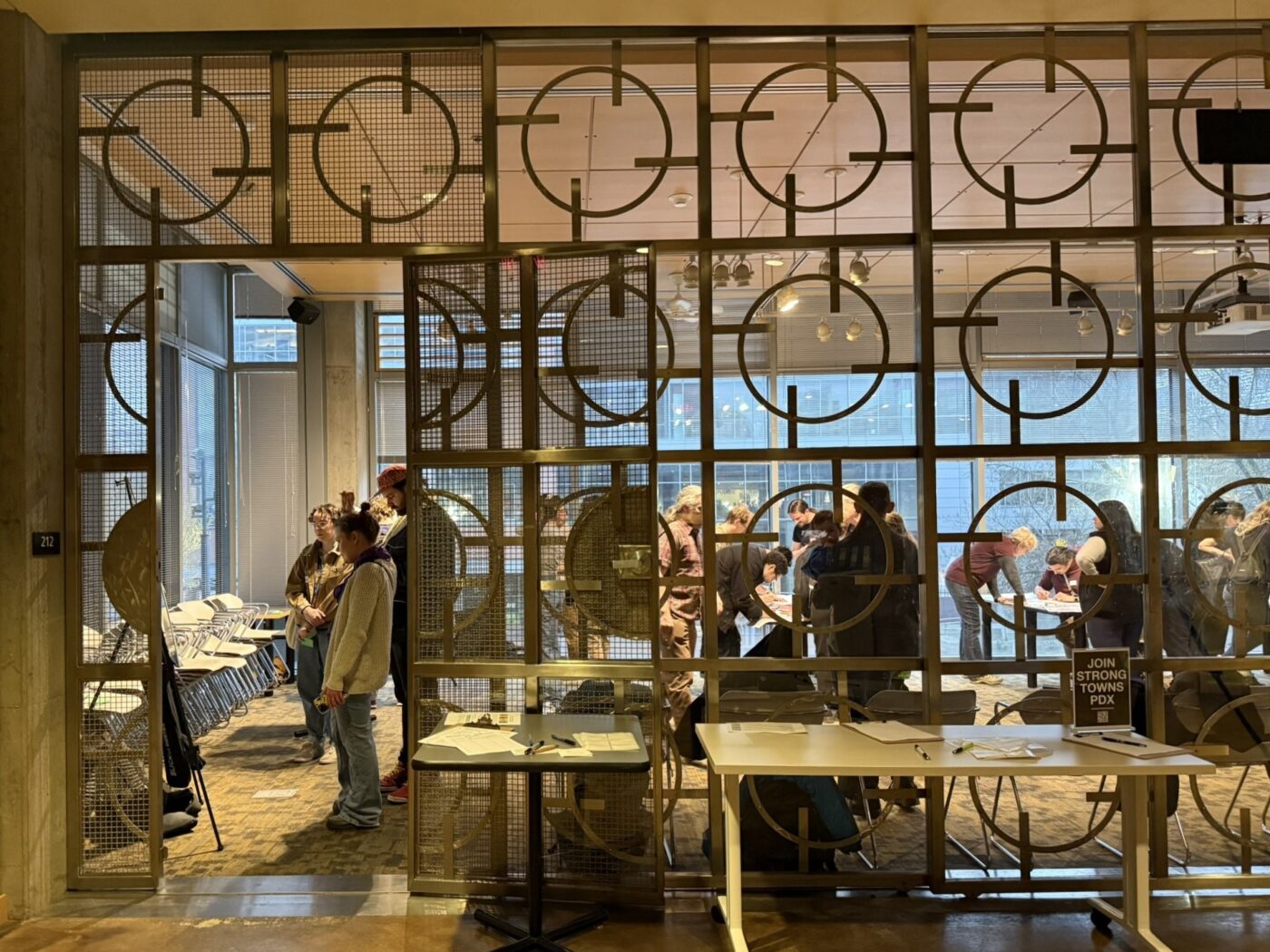
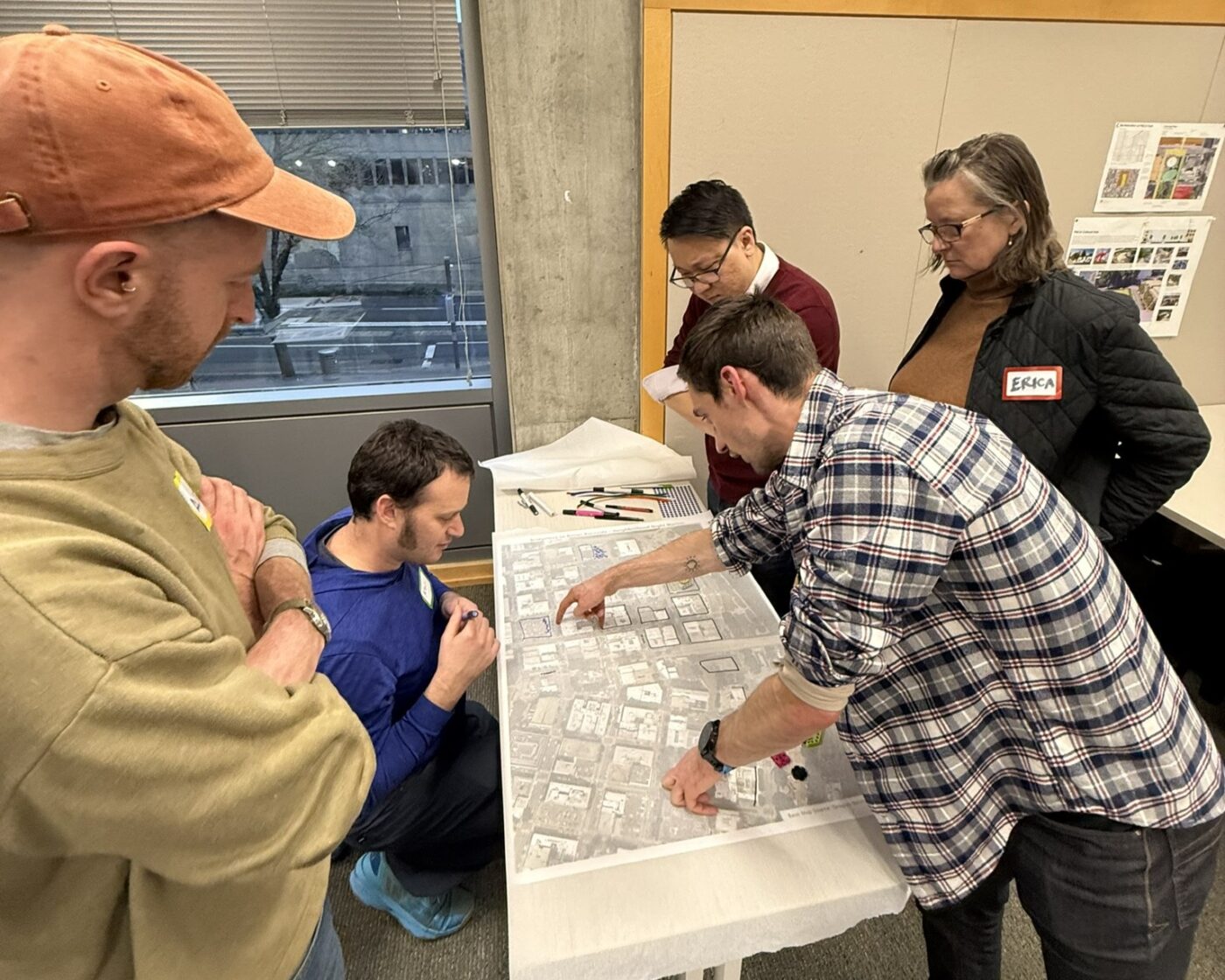
Better Burnside began with a proposal by Xavier Stickler of the Downtown Neighborhood Association, Sean Sweat of the Pearl District Neighborhood Association, and Mary-Rain O’Meara of the Old Town Community Association. This trio of urban advocates came together and applied to local nonprofit Better Block to help realize their vision.
Supporting the project with planning and engagement expertise are PSU Master of Urban and Regional Planning (MURP) students Alex Gill, Brian Bill, Eric Gasper, Jackson Morrison, Michael Azierski, and Michel Rojas. Those students have worked on Bridgeless to Better Burnside over the last year in multiple PSU Better Block Project Pathway Courses. With this workshop, the partnership expanded to include Strong Towns PDX, the local chapter of a national urbanism advocacy group who dedicated their monthly meeting to the project.
As the project’s lead supporter, Ryan Hashagen’s interest in the project stems from his roles as the managing director of Better Block PDX and owner of Icicle Tricycles, a small business based in Old Town. Hashagen sees the bridge project as a perfect opportunity. “Now is the time for our community to leverage the ‘bridgeless’ years into making W Burnside the signature street it should be,” Hashagen said. “When urban places make people feel safe and welcome, small business can not only survive, but thrive.”
The design workshop marked an important milestone in bringing Better Burnside to the public’s attention. Attendees identified improvements to enhance connectivity across inner W Burnside from 2nd Ave to 10th Ave. Suggestions included reducing vehicle lanes to reclaim space for other uses, creating distinct separations between vehicles and pedestrians, and adding pedestrian and wayfinding enhancements to make exploring easier, more comfortable, and more rewarding.
This project is about addressing local challenges like pedestrian safety, transit access, and increasing both day and night-time foot traffic; but it’s also tied to the broader effort to chart a brighter future for Portland’s Central City. Given the scale of Better Burnside, this workshop was just the beginning of the community engagement process. The PSU students will remain involved with this project until June. In the coming months they’ll refine ideas with local stakeholders and preferred alternatives while the neighborhood associations and Better Block PDX will carry the torch until Better Burnside is handed over to the city for the next phases of engagement, design, and implementation.
Keep an eye out for future engagement opportunities from Better Block PDX, PSU, Strong Towns PDX, and— in the future, with the public’s support— from the City of Portland. With the changes brought by the Earthquake Ready Burnside Bridge, W Burnside is entering a pivotal period that will define its purpose and the future of the Central City. Let your voice be heard. If you or someone you know is interested in learning more, contact the project team at better.burnside.psu@gmail.com.


